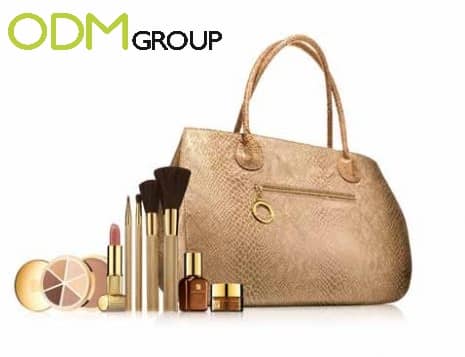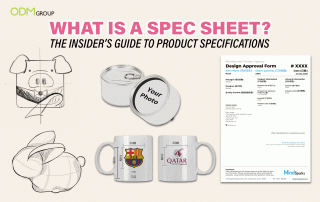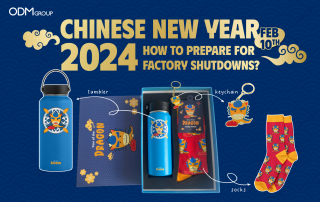Smoother, better, faster. These are all words that we want for our marketing activities, and promotional merchandise is no exception. But how can you be sure you’re spending wisely on your marketing budget in such a complex, fast-moving, and ever-changing industry?

It is an undeniable fact that the marketing budget plays a huge role in the success of your business. It doesn’t matter whether you are a startup or a well-established company; your business will not survive without marketing.
It is important to know how much money you should spend on your marketing. In order to do this, you must know what marketing can do for your business and how it can benefit you.
If you are looking to maximise your marketing budget, then there are some things you need to consider. It is important that you are able to accurately analyse the effectiveness of your marketing budget without wasting a lot of money in the process.
Let’s delve first on what are the important aspects of marketing.
What Are the Important Aspects of Marketing?
A properly planned and strategic marketing schedule can help your brand stay on topic and out of trouble. Effective promotion scheduling is all about determination, planning, and timing. Here’s a guide we prepared for you to plot your promotional plan like a pro!
How to Maximise Your Marketing Budget?
1. Define Clear Objectives
Start by outlining what you want to achieve with your promotional products. Are you aiming to increase brand visibility, generate leads, boost sales, or enhance customer loyalty?
Ensure your goals are specific, measurable, attainable, relevant, and time-bound to provide a clear direction for your campaign.
2. Know Your Audience
Conduct thorough research to understand your target demographic. Analyze their preferences, behaviours, and needs. Tailor your promotional product ideas to resonate with their interests, ensuring higher engagement and a better response rate.
3. Quality Over Quantity
While it might be tempting to opt for cheaper products in bulk, investing in high-quality items pays off in the long run. Durable and useful merchandise reflects positively on your brand, creating a lasting impression and potentially increasing the return on investment.
4. Strategic Branding
Ensure your branding elements, such as your logo, colours, and messaging, are consistently and prominently displayed on all promotional products. This consistency helps in reinforcing brand recognition and identity among your audience.
5. Choose Practicality
Select items that offer practical value and can be used regularly by your audience. Functional products like reusable bags, drinkware, or tech accessories serve as constant reminders of your brand, providing extended exposure.
6. Embrace Creativity
Stand out by brainstorming innovative and unique promotional ideas. Unconventional designs or products can leave a memorable impression on your audience, setting your brand apart from competitors.
7. Leverage Technology
Incorporate tech-related promotional products that align with current trends. Items like USB drives, wireless chargers, or smart gadgets not only engage your audience but also offer practical utility, increasing their perceived value.
8. Partner with Reliable Suppliers
Collaborate with trusted suppliers known for delivering quality products within stipulated timelines. Establishing a strong relationship ensures consistent product standards and reliability for your campaigns.
9. Track and Measure
Implement tracking mechanisms to monitor the effectiveness of your promotional products. Use metrics like website traffic, social media engagement, or redemption rates to evaluate the success of your campaign and make data-driven decisions.
10. Adapt and Evolve
Continuously analyze performance metrics and market trends. Be prepared to adjust your strategies based on insights gained. Flexibility and adaptability are crucial to optimizing your promotional product strategy for maximum impact.
Tips on How to Allocate Your Marketing Budget
Now that you are familiar with what a marketing budget is and already understand how to make one, let’s give you some helpful tips for allocating a budget.
Tip #1: Allocate your budget based on where your audience is.
Invest in platforms and channels to reach your ideal target audience. This seems simple, but it’s true for any successful marketing plan.
Knowing your audience inside and out will help you choose marketing channels to reach your audience. Persona research and the buyer’s journey will help you best understand how to allocate your marketing budget to reach your target audience.
Tip #2: Diversify your strategy.
Omni-channel campaigns are extremely important in marketing. Yes, you should invest in campaigns and strategies that bring success, but you should not put all of your eggs in one basket.
For example, if you spend too heavily on one campaign or channel, and suddenly, something happens to negatively affect that, it can greatly hurt your performance. Instead, invest in multiple integrated campaigns to see which ones work and which do not.
Tip #3: Sync with your team.
Marketing budget allocation isn’t just for marketing teams. Sales teams should be included in a digital marketing plan to help you reach your goals.
When marketing and sales collaborate on budget allocation, they can create a plan that puts both teams in the best position to succeed and reach their goals.
Tip #4: Leverage data.
When approaching marketing budget allocations, data should be used throughout the process. When you create your marketing plan and allocate budgets, data will provide the insights to decide what to spend on and how to formulate the plan.
Not only can data help with marketing planning, but it can be used to track your progress. Over time, you may find that some campaigns and strategies are more successful than others.
For those campaigns that are not effective, don’t be afraid to call it a loss and end the campaign. Changing your plan and reallocating your marketing budget to be more successful across all channels and campaigns can help you reach your goals more quickly.
Tip #5: Practice bottom-of-the-channel funnel marketing.
Take a bottom-up approach to your marketing, and invest more in marketing that targets the bottom of the conversion funnel. Invest in lead generation (for example, SEO or Google Ads) to maximize bottom-of-funnel marketing.
Investing in those close to converting online minimizes your risk and increases your potential marketing ROI.
Marketing Budget Cuts and How to Manage Them?
Marketing budget cuts refer to reduced allocated funds for marketing activities within a company or organization. These cuts can occur due to various reasons, such as economic downturns, changes in business priorities, financial constraints, or shifts in market conditions.
When faced with marketing budget cuts, managing the situation effectively is crucial to minimize the impact on ongoing marketing strategies and overall business performance. Here are some steps to manage marketing budget cuts:
1. Evaluate Performance Metrics
Assess the performance and ROI of existing marketing campaigns and channels. Identify which strategies yield the best results and which might be less effective or costly.
2. Prioritize High-Impact Strategies
Focus on marketing initiatives that significantly impact the company’s goals and objectives. Allocate resources to areas that generate the most leads, conversions, or revenue.
3. Trim Ineffective or Low-Performing Activities
Consider eliminating or reducing funding for marketing efforts that have not been delivering desired outcomes. This could involve cutting down on certain advertising channels, events, or campaigns that aren’t providing substantial returns.
4. Leverage Cost-Efficient Channels
Explore cost-effective marketing channels such as social media, content marketing, and email campaigns that often offer good returns on investment while requiring lower budgets than traditional advertising.
5. Negotiate with Vendors and Partners
Negotiate with vendors and marketing partners for better deals, discounts, or flexible payment options. Consolidating contracts or seeking long-term agreements might help in reducing costs.
6. Focus on Targeted and Efficient Campaigns
Optimize targeting in marketing campaigns to reach the most relevant audience. Personalized and targeted campaigns yield better results and often require less spending than broad-based initiatives.
7. Leverage Internal Resources
Utilize in-house expertise and resources effectively. Encourage cross-departmental collaboration to generate new ideas and strategies without additional costs.
8. Monitor and Adjust
Continuously monitor the performance of marketing efforts in relation to the adjusted budget. Be ready to make further adjustments based on the data and market feedback.
9. Communicate Clearly
Transparently communicate the reasons for budget cuts and their implications to the marketing team. Encourage innovative thinking and creative solutions within the constraints of the reduced budget.
10. Maintain Flexibility
Stay agile and adaptable. Market conditions and business priorities may change, so be prepared to adjust strategies and allocations accordingly.
Nearly all companies, both big and small, use marketing to promote their business. For this to be as effective and efficient as possible, it is important to make a marketing budget. This should clearly state how much money will be spent and on what. If a budget isn’t followed, spending unnecessary money and failing with your marketing objectives is easy.
Look at this excellent example from Estee Lauder, an American multinational manufacturer and marketer of skincare, makeup, fragrance and hair care products.
How Did Estee Lauder Use Their Marketing Budget to Boost Sales?
Estee Lauder was one of the first companies to use gifts with purchases as a marketing tool, and they continue doing it to this day. This is a good way of incentivizing sales and increasing average spending per customer, as the gifts are only given away if you purchase products over a certain amount.
One of their promotions includes giving away a gift set, including makeup and a travel bag. These promotional products often have logos on them, which works as a type of long-term advertising, generating more exposure to the brand.
To Conclude,
A marketing budget is an investment in your business. Just as you wouldn’t spend money on something that isn’t likely to benefit you, focus your budget on areas that are likely to benefit your brand.
Become familiar with the various marketing channels out there, and test them to determine what kinds of results you can expect from each. Then, focus your budget on those channels that are likely to give you the best return on investment.
The Role of ODM,
The ODM Group is a company that specializes in sourcing, designing, and manufacturing POS display units, custom promotional merchandise, marketing gifts, and product packaging. With the help of our superb in-house design team, Mindsparkz, we can breathe life into your marketing visions.
With years of experience in the promotional product industry, we can help you maximize your marketing budget through low-cost yet high-quality products custom-designed for your company. What are you waiting for? Send us an email today!
Looking for a Good Read?
Frequently Asked Questions (FAQs)
Why do I need a marketing budget?
A marketing budget helps you to be more effective and efficient with your promotional strategies. It states how much money will be spent and what you hope to achieve with your promotion. This helps streamline your focus and determine priorities.
How do you decide on what promotional products to invest in?
In deciding on a promotional product, there are many factors that come to play. You have to think of its relevance to your target audience, quality, branding, and also feasibility.






